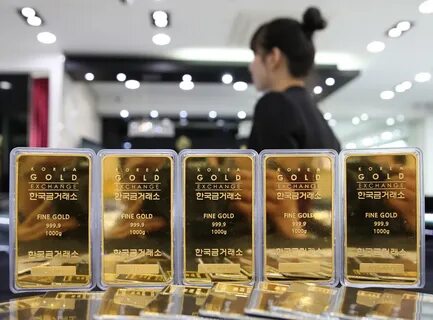Metal gold has long been a symbol of opulence and luxury in jewelry design. Its timeless allure and enduring beauty have made it a sought-after choice for crafting exquisite pieces that stand the test of time. From ancient civilizations to modern-day fashion, the use of metal gold in jewelry design has captured the imagination of designers and wearers alike. In this article, we will explore the lasting allure of metal gold in jewelry design and its significance throughout history.
Metal gold has been a prized material in jewelry design for centuries, valued for its enduring beauty and luster. Its timeless allure continues to captivate designers and consumers alike, making it a staple in the world of luxury accessories.
The enduring appeal of gold lies in its combination of rarity, durability, and versatility. As a precious metal, gold holds a unique value that has persisted throughout history, making it a symbol of wealth, status, and esteem. Its durability makes it well-suited for everyday wear, and its malleability allows for intricate and detailed designs that showcase its radiant qualities.
In jewelry design, gold can be manipulated into a variety of finishes, from polished and glossy to textured and matte, offering endless possibilities for creativity. Its warm, rich color complements a wide range of gemstones and can be incorporated into a diverse array of styles, from classic and traditional to modern and contemporary.
With its enduring allure, gold jewelry remains a timeless investment and a treasured addition to any collection. Whether worn as a statement piece or as an everyday accessory, the enduring allure of metal gold in jewelry design continues to capture hearts and elevate the aesthetics of those who wear it.
The Fascinating Journey of Metal Gold Through History
See also: metal detectors

The history of gold dates back to ancient civilizations such as Greece, Egypt, and Rome, where it was used for various purposes including currency, jewelry, and religious artifacts. Over time, gold became synonymous with wealth and power, leading to the rise of empires and the development of international trade.
During the Middle Ages, gold continued to be highly prized and was used to create intricate jewelry and ornate religious artwork. The Age of Exploration brought about the discovery of new sources of gold in the Americas, leading to the influx of precious metal into Europe and Asia.
In more modern times, gold has played a crucial role in the global economy, serving as a standard for currency and a form of investment. The California Gold Rush and South African Gold Rush further emphasized the allure and value of this precious metal.
Today, gold continues to be a symbol of luxury and prestige, with its demand driven by various industries such as jewelry, technology, and finance. The fascinating journey of gold through history is a testament to its enduring appeal and significance in human civilization.
Uncovering the Enigmatic Properties of Precious Metal Gold

Uncovering the Enigmatic Properties of Precious Metal Gold explores the unique characteristics and uses of gold, from its outstanding conductivity and resilience to its widespread application in electronics, medicine, and jewelry. This in-depth study delves into the rich history and cultural significance of gold, shedding light on its enduring allure and enduring value. Through a comprehensive analysis of its chemical and physical properties, this investigation offers new insights into the extraordinary properties that make gold a truly exceptional metal.
The Economics and Business of Investing in Metal Gold

The economics and business of investing in metal gold involves understanding the market forces that drive the price of gold, as well as the various ways to invest in the commodity. Investors must consider factors such as supply and demand, inflation, geopolitical events, and currency fluctuations when making investment decisions related to gold. Additionally, there are different investment vehicles available for gold, including physical bullion, gold futures, gold mining stocks, and exchange-traded funds (ETFs). It is crucial for investors to conduct thorough research and analysis before entering the gold market, as it can be influenced by a wide range of economic and financial factors.
Exploring the Cultural Significance of Metal Gold in Ancient Civilizations

Exploring the Cultural Significance of Metal Gold in Ancient Civilizations involves understanding its role as a symbol of wealth, power, and status. Gold was used in the creation of religious artifacts, jewelry, and ceremonial objects, and was often associated with the divine and the afterlife. Its rarity and enduring beauty made it a highly prized material, and its cultural significance can be seen in the mythologies, art, and traditions of ancient civilizations such as the Egyptians, Greeks, Romans, and Incas. Studying the use of gold in these societies provides insight into their values, belief systems, and social structures.
The Environmental Impact of Mining and Refining Metal Gold
Mining and refining metal gold can have significant environmental impacts. During the mining process, large amounts of earth and rock must be excavated, resulting in habitat destruction and loss of biodiversity. This can also lead to soil erosion and contamination of water sources. Additionally, the use of heavy machinery and explosives can contribute to air and noise pollution.
The refining process also poses environmental challenges as it requires the use of toxic chemicals such as cyanide and mercury, which can contaminate soil and water if not properly managed. Furthermore, the energy-intensive nature of refining gold can contribute to greenhouse gas emissions and climate change.
Overall, the environmental impact of mining and refining metal gold highlights the need for more sustainable and responsible practices in the industry. Efforts to minimize habitat destruction, reduce pollution, and improve energy efficiency are crucial in mitigating these negative effects on the environment.
The Role of Metal Gold in Modern Technology and Innovation
Metal gold plays a crucial role in modern technology and innovation due to its unique properties. It is an excellent conductor of electricity and is highly resistant to corrosion, making it ideal for use in electronic components such as circuit boards and connectors. Gold is also used in the aerospace industry for its reliability and resistance to extreme temperatures and pressures. Additionally, gold nanoparticles are being explored for various medical and environmental applications, including targeted drug delivery and pollution remediation. Overall, gold’s remarkable properties make it an indispensable material in advancing technology and driving innovation in various fields.
Understanding the Chemistry and Composition of Metal Gold
Gold is a chemical element with the symbol Au and atomic number 79. It is a dense, soft, shiny, malleable, and ductile metal. It has a bright yellow color and is highly valued for its aesthetic and monetary properties. Gold is relatively inert, meaning it does not tarnish or corrode easily. It is often found in its pure form, as nuggets or grains in rivers and streams, or in veins within rocks. Gold is also commonly found in combination with other metals, such as silver and copper.
The chemistry of gold is relatively simple, as it is a noble metal and does not readily react with most other elements. It is resistant to acids, but can be dissolved in a mixture of nitric and hydrochloric acid, a process known as aqua regia. Gold is known for its excellent conductivity of electricity and is often used in electronic devices. Additionally, its resistance to corrosion makes it a popular choice for plating and coating in a wide range of applications. Overall, the unique chemistry and composition of gold make it a highly valuable and useful metal in various industries.
The Artistic and Aesthetic Appeal of Metal Gold in Jewelry and Decor
Metal gold has been a symbol of wealth, power, and luxury for centuries, making it a highly sought-after material in jewelry and decor. Its lustrous and shiny appearance, combined with its malleability and resistance to tarnishing, makes it an ideal choice for creating intricate and elaborate designs. The warm, rich color of gold adds a touch of elegance and sophistication to any piece of jewelry or decor, making it a popular choice for special occasions and formal settings.
In addition to its visual appeal, gold also holds a significant cultural and historical value. It has been used in various forms of artistic expression across different cultures, from ancient civilizations to modern times. Its timeless and classic appeal transcends trends and fashions, making it a versatile choice for both traditional and contemporary designs.
Whether used in the form of pure gold or as an alloy with other metals, the artistic and aesthetic appeal of gold in jewelry and decor is undeniable. Its ability to enhance and complement other materials, such as gemstones and wood, further adds to its allure. From delicate filigree work to bold statement pieces, gold continues to captivate and inspire artists and designers, making it a staple in the world of luxury and beauty.
The Healing Properties and Health Benefits of Metal Gold
Gold is believed to have various healing properties and health benefits. It is thought to have anti-inflammatory effects and be useful in treating skin infections and rheumatoid arthritis. Additionally, gold is used in some advanced medical treatments, such as cancer treatment and the management of certain types of pain. Some people also use gold in traditional medicine practices for its supposed ability to promote mental clarity and emotional well-being. However, it is important to note that these claims are not scientifically proven, and more research is needed to validate the health benefits of gold.
The Future of Sustainable and Ethical Practices in Metal Gold Extraction
Metal gold extraction has long been associated with environmental and ethical concerns due to the use of harmful chemicals such as cyanide, as well as the exploitation of workers in mining operations. The future of sustainable and ethical practices in gold extraction involves the development and implementation of innovative technologies and processes that minimize the environmental impact and prioritize the well-being of workers.
One promising approach is the use of alternative lixiviants, such as thiosulfate, which can effectively extract gold without the use of toxic substances. Additionally, advancements in recycling and reusing water in the extraction process can minimize water consumption and reduce the release of contaminants into the environment.
Furthermore, ethical gold extraction practices necessitate ensuring fair wages and safe working conditions for miners, as well as combating illegal mining operations and the use of child labor. Certification programs, like the Responsible Jewellery Council, play a crucial role in promoting and verifying responsible sourcing practices.
Overall, the future of sustainable and ethical gold extraction lies in the continuous development and adoption of environmentally friendly technologies and processes, as well as the enforcement of ethical labor standards throughout the supply chain. By addressing these challenges, the gold mining industry can work towards a more sustainable and responsible future.
In conclusion, the lasting allure of metal gold in jewelry design is undeniable. Its timeless beauty and versatility make it a popular choice for creating stunning and sophisticated pieces that stand the test of time. From ancient civilizations to modern fashion trends, metal gold continues to captivate and inspire, proving its enduring value in the world of jewelry design.
See also

